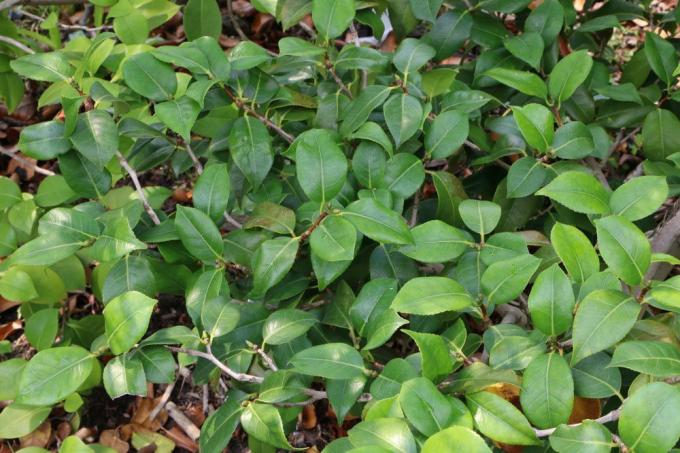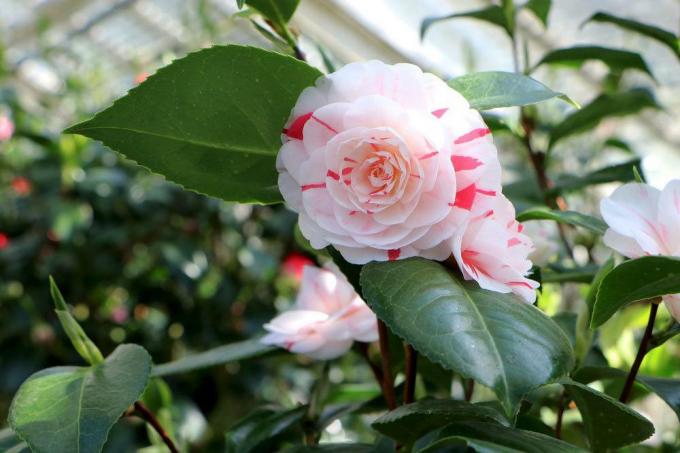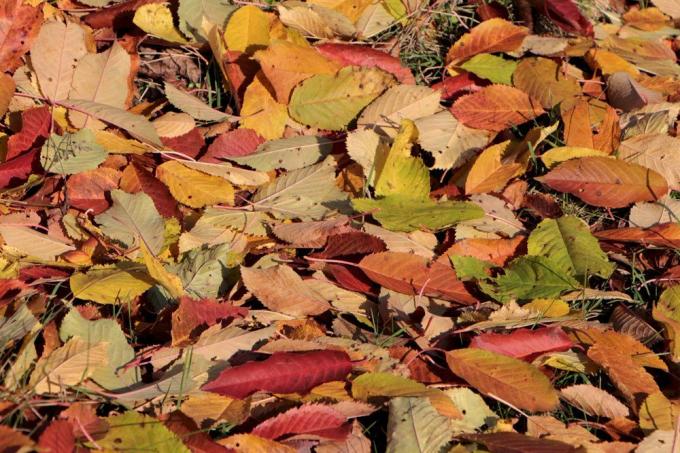
table of contents
- Hardiness
- sorts
- HIGO camellias
- Overwinter
- In the winter garden
- Outdoors
A true splendor of flowers presents itself over the cold season with the camellia. The East Asian beauties are becoming more and more popular in this country and can easily be kept all year round. The most important thing is the right winter quarters, because this is the only way for the tea bush plants (bot. Theaceae) do not lose their flowers over the winter. Wintering camellias is easier than many people think, as the plants even depend on a little cold.
Hardiness
Are camellias hardy?
In Central and Northern Europe, Camelia japonica are not considered winter hardy, as temperatures can easily drop to -10 ° C or more, which the plants don't really like. At temperatures from -12 ° C to -14 ° C, the foliage changes color and the flowers can already be lost at -2 ° C. Because of this, an effective one Winter protection Essential for the East Asian tea family if you have a specimen in the garden. Despite their sensitivity to cold temperatures, it does not mean that camellia must be avoided in all German-speaking regions. The following areas are ideal for wintering outdoors.
- north-western coastal areas (North Sea)
- north-western Germany from Düsseldorf to Bremen
- Upper Rhine
- Southern Switzerland

There camellias can be kept outdoors all year round, even without winter protection. If you live elsewhere, you can increase the winter hardiness of the plants with robust varieties, even if they are actually not winter hardy.
sorts
The following list gives an overview of suitable varieties of Camelia japonica that can cope with harder winters and the appropriate winter protection.
- Camelia japonica 'Ice Angels'
- Camelia japonica 'Winter’s Joy ‘
- Camelia japonica 'Black Lace'
- Camelia japonica 'Alba Plena'
- Camelia japonica 'April Dawn'
- Camelia japonica 'Barbara Morgan'
- Camelia japonica 'Bonomiana'
- Camelia japonica 'Matterhorn'
- Camelia japonica 'Nuccio’s Gem ‘
- Camelia japonica 'Wheeler'
All of these varieties withstand periods of frost down to -12 ° C very well and can be used in the Outdoors overwinter without any problems. Of course, winter protection should not be missing from these, but these varieties are better equipped against frost and darkness than the other varieties. There are even species that are even more robust but still couldn't be described as really hardy. However, the varieties of autumn flowering chamomile (bot. Camellia sasanqua) winter in the domestic latitudes even better than Camelia japonica and are therefore even better suited for keeping outdoors. Although they develop fewer flowers, the scent is indescribable.
The following two types are to be mentioned:
- Camellia sasanqua 'Winter’s Snowman ‘
- Camellia sasanqua 'Winter’s Joy ‘
HIGO camellias
In addition to the varieties and species mentioned above, the HIGO camellias should also be mentioned, also known as camellias with the addition "H" in their name. The name HIGO indicates the origin of these Camelia japonica varieties. They come from the historical province of Higo, today's Kumamoto Prefecture, which is located in Kyushu. These varieties are selected by the Higo Camellia Society. They are camellias that have good properties against cold, mainly due to the simple flowers. Some varieties can withstand temperatures of -20 ° C with winter protection and are therefore perfect for home gardens.
The following varieties should be mentioned in particular:
- Camelia japonica higo 'Kumagai'
- Camelia japonica higo 'Hiodoshi'
- Camelia japonica higo 'Hatsu Warai'
- Camelia japonica higo 'Mikuni-no-homare'
These camellias can easily overwinter outdoors in Germany and if they get too cold, they show it through blackened stamens. On the other hand, they do not lose their flowers so quickly, which is one of the problems of the known camellia species. Although HIGO camellias are a little more expensive to buy, they are becoming more and more popular due to their robust growth. Regardless of which type or variety you ultimately choose: overwintering outdoors is without winter protection not possible and should be used for reasons of safety even in regions with mild winters will. This is the only way to guarantee that the camellia will get through the winter.

Tip: Often traders offer their camellias as hardy cultivars, although these are not a robust variety. Therefore, when purchasing, be sure to pay attention to the variety so that you do not accidentally buy a camellia that dies at the first signs of frost.
Overwinter
Hibernate in a pot: Instructions
Keeping the camellia in a bucket is still best in the home, as you can simply bring the camellia into your home at the end of the year. It is also easier to rearrange the plants according to their light and temperature requirements. If your place of residence is too cool or you wanted to keep the plants in the bucket from the start, you need a suitable room for the winter quarters.
This should be designed as follows:
- constant temperature from 0 ° C to 12 ° C
- no drafts
In the winter garden
instructions
Conservatories or greenhouses are best suited for this, as they offer enough light and never get too warm. Alternatively, you can place the camellia in an unused room, which, however, must not be heated for the entire winter. The main reason for this lies in the flowering period. The flowers show their splendor over a period of six weeks. However, if it is over 12 ° C, the flowering time is shortened to a few days. If the temperature is too cold, however, the flowers are thrown off. When overwintering, you need to allow the Camelia species to follow the rhythm below.

Rest period from the end of December to the end of February
This six to eight week rest period is necessary for the plant. During this time it hardly needs any light and can even be stored in unheated, dry cellars. The humidity should always be around 60 ° C. To do this, simply spray lime-free water around the plant every day or set up a humidifier. Only water a little so that the soil does not dry out completely and fertilization is only used during the flowering period.
Beginning of spring
From March onwards, the camellia has to be accustomed to a warmer location again. Since it is not winter hardy, it must of course not be put in the garden or on the balcony yet. If you have stored the plant in a dark room, it must now move to the hallway or an unheated room. The nocturnal temperatures can already be 6 ° C to 12 ° C and the camellia now needs a lot of light. Fertilize and water as you would during the rest period and pay attention to the humidity.
As soon as the temperature outside is constant at 6 ° C at night and there is no longer any risk of frost, you can place the camellias on the balcony or terrace again. If you had the camellia in the living room, you can put it there again when you no longer need to use the heating.

Outdoors
instructions
Even if the camellias are not hardy, you can overwinter the plant outdoors in the warmer regions. Keep in mind that younger or newly planted camellias definitely need winter protection, while older and well-used specimens need less winter protection. Proceed as described below.
1. The location of your camellia should be chosen so that it does not get any morning sun over the winter, as it dries out the plant too quickly. A garden fleece, which is simply placed on the eastern side of the plant, is ideal for sun protection. The location must also be protected from the wind. Walls, hedges or thick fences offer this.
2. Cover the root ball with a thick layer of mulch or leaves. This ensures warmth over the winter and at the same time prevents it from drying out.
3. If you have a young specimen or a newly planted camellia in the garden, you will need to pack them as they are not hardy at all.
The following are suitable for this:
- Reed mats
- Fir branches
- fleece
Alternatively, set up a chain link fence around the plant and fill it completely with leaves.

4. Water is only poured on frost-free days.
5. Be sure to watch out for frosty nights in spring. These could damage the fresh buds if it was warm during the day. As a precaution, you should leave the winter protection a little longer here.
